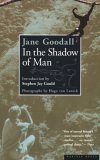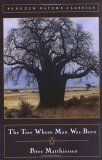Jacqui Murray's Blog, page 161
September 9, 2013
Writers Tip #55: Don’t Lecture
 When you read your story, does it sound off, maybe you can’t quite put your finger on it, but you know you’ve done something wrong? Sometimes–maybe even lots of times–there are simple fixes. These writer’s tips will come at you once a week, giving you plenty of time to go through your story and make the adjustments.
When you read your story, does it sound off, maybe you can’t quite put your finger on it, but you know you’ve done something wrong? Sometimes–maybe even lots of times–there are simple fixes. These writer’s tips will come at you once a week, giving you plenty of time to go through your story and make the adjustments.
Today’s tip: Don’t pontificate
This is a tip from Writer’s Digest, one I agree with 100%:
Don’t use your fiction story as a soap box for your beliefs. It won’t work. Readers will get turned off. Worse, if they disagree with you, they’ll leave nasty comments on Amazon and scare other readers away. Readers buy fiction to be entertained.
You don’t have to lecture to get your ideas across. Think of your cross section of friends. Are they all like you–Republican or Democrat? Do they all believe/not believe in global warming? Do you still like them? Sure, because you probably avoid politics (and religion and money as mom recommended) and enjoy the person they are. Do that with your characters.
–Click to have Writer’s Tips delivered to your email box
Jacqui Murray is the author of the popular Building a Midshipman , the story of her daughter’s journey from high school to United States Naval Academy. She is webmaster for six blogs, an Amazon Vine Voice book reviewer, a columnist for Examiner.com and TeachHUB, Editorial Review Board member for Journal for Computing Teachers, Cisco guest blog,Technology in Education featured blogger, IMS tech expert, and a bi-monthly contributor to Today’s Author. In her free time, she is editor of a K-8 technology curriculum, K-8 keyboard curriculum, K-8 Digital Citizenship curriculum, and creator of technology training books for how to integrate technology in education. Currently, she’s editing a thriller that should be out to publishers next summer. Contact Jacqui at her writing office or her tech lab, Ask a Tech Teacher.
Filed under: characters, writers resources, writers tips Tagged: creative writing, fiction, writers tips


September 6, 2013
Book Review: In the Shadow Of Man
by Jane Goodall
My rating: 5 of 5 stars
View all my book reviews
I read Jane Goodall’s In the Shadow of Man (Houghton Mifflin 1971) years ago as research for a paleo-historic novel I was writing. I needed background on the great apes so I could show them acting appropriately in their primeval setting tens of thousands of years ago. While I did get a marvelous treatise from this book on their wild environ, I also got my first introduction to the concept that they are almost-human, maybe even human cousins.
But I digress. Back to Jane Goodall.
This is the memoir that began her career, that relays her start in the field of anthropology, how she conducted her early studies and the price she paid personally and professionally for her perseverance. She had no formal background in primatology or fieldwork when she began this study. She entered Tanzania with an open mind, a patient attitude and an interest in exploring the capers of wild chimpanzees. From there, she invented everything else that would allow her to investigate these fascinating primates. In the book, she shares every step with readers–how she followed the chimps until they finally accepted her presence without fleeing, how she learned to identify each animal and in that way track their lives, how she came to understand their verbal and body language, how she became a better mother by watching Flo’s parenting skills.
At the time she wrote this book, chimpanzees were not considered human–still aren’t. Goodall approached her fieldwork expecting to see them fail the tests of human-ness, things like using tools, caring for their families, working as a group, planning their actions. Each hurdle she put in front of them, they lept across, until her work destroyed all the rules about what made you and I human. She did for chimpanzees what Dian Fosse did for the gorillas and Birute Galdikas did for orangutans: she humanized them.
By the time I finished this book, I realized that chimpanzees have a good and fulfilling life. They have adapted to suit their environment. They lack man’s wanderlust, restricting themselves to smaller and smaller parts of Africa every year, but by Jane Goodall’s account, they enjoy their existence.
Can we say as much for ourselves?
Jacqui Murray is the author of the popular Building a Midshipman , the story of her daughter’s journey from high school to United States Naval Academy. She is webmaster for six blogs, an Amazon Vine Voice book reviewer, a columnist for Examiner.com and TeachHUB, Editorial Review Board member for Journal for Computing Teachers, Cisco guest blog, IMS tech expert, and a monthly contributor to Today’s Author. In her free time, s he is the editor of a K-8 technology curriculum, K-8 keyboard curriculum, K-8 Digital Citizenship curriculum, and creator of technology training books for how to integrate technology in education. Currently, she’s editing a thriller that should be out to publishers next summer.
Filed under: book reviews Tagged: book reviews, early man, jane goodall


September 4, 2013
Will I Find Employment if I’m an Older Job Hunter?
 This post is for Alex Cavanaugh’s Insecure Writers Support Group (click the link for details on what that means and how to join. You will also find a list of bloggers signed up to the challenge that are worth checking out like Kate and Rebecca who inspired me to begin). Once a month we all post our thoughts, fears or words of encouragement for fellow writers.
This post is for Alex Cavanaugh’s Insecure Writers Support Group (click the link for details on what that means and how to join. You will also find a list of bloggers signed up to the challenge that are worth checking out like Kate and Rebecca who inspired me to begin). Once a month we all post our thoughts, fears or words of encouragement for fellow writers.
This month’s insecurity doesn’t sound like a writing insecurity, does it? Bare with me. I’ll get you there. I went to a get-together at the home of a writer friend, Diana. I thought we were going to talk about blogging–all of us getting our struggling blogs going, following each other, in a mutual rising tide sort of thing. But it didn’t work out that way. We got distracted (though I think Diana planned this). We got to talking about our jobs, careers, futures. Everyone sitting there was over 60 and had been booted from a job with Big Business (one was Barnes and Noble, another a teacher, a few were a while ago and they were still looking for that next opportunity). There was amazing talent in that room–writing, sales, IT–and still we all wondered if anyone would take a chance on us. Mostly, we decided no, no one would, so we’d have to do it ourselves.
We had good reason to believe we were on our own. Arleen Bradley over at Career Coaching wrote this:
Some company recruiters … discriminate against the unemployed in hiring. Resumes submitted through the big board sites and career fairs drop to the bottom of the pile never to make it to the top because these resumes are thought to come from the unemployed and the unemployed need not apply.
She shared terms used by recruiters when considering an unemployed applicant (as opposed to those gainfully employed):
lazy
apply for any available job whether or not their skills match the requirements
submit unprofessional resumes
can’t follow simple directions
haven’t kept up with the changes in their field and their skills are rusty
rude to people below the hiring managers’ level
stalkers
That didn’t describe a single person in the group I was with. Every one of them was struggling, eager to work, ready to be creative about where their next dollar could come from. They were researching, learning new skills (like blogging), helping each other. Does that sound lazy or incompetent?
And Arleen understood that:
…that is not the case in most situations now. Many people were laid off because their entire department was eliminated, their jobs were sent overseas, or the company folded.
Which is where blogging came in. My group of writers would create blogs to start our Next Big Career, to promote ourselves, using the beneficence of social media as the engine for our paycheck. We would share our resources, see what happened.
But what if nothing happens?
Now, I’m pretty upbeat so I choose to take the upside of this abyss and call it an opportunity. In fact, my small group is a microcosm of what I see going on all over the country. Older people are going self-employed. They’re refusing to be beaten down when traditional job paths kick them to the curb and tell them they’re finished. They aren’t finished. They’ve only just begun. They’re networking, reaching out through blogs to others, offering their skills for free or fee, and doing it with energy, alacrity, cerebral panache. Most sixty-year-olds will live twenty more years, way too long for most retirement funds. Older workers are ready and willing to create a patchwork of revenue sources, stitched together from being a WalMart greeter, an Examiner.com columnist, and a self-published author on Kindle. This is what gives headhunters nightmares. Older workers aren’t looking for that fulltime job that pays six figures. They’ll take their expertise, tested skills, track record of accomplishment and put it to work for themselves, in their own business.
Which is where insecurity pokes its nose under my positive tent: What if it doesn’t work? What if my friends (and maybe me) put a lot of work into something that fails? What if they spend the finite asset of their energy and enthusiasm on an idea that can’t be monetized enough to carry them through to a social security check that my never arrive?
I just tore off another fingernail at the prospect. I better get back to my writing. I KNOW I won’t succeed if I don’t finish my current WIP.
BTW, anyone interested in starting an online 60 group?
Powered by Linky Tools
Click here to enter your link and view this Linky Tools list…
Jacqui Murray is the author of the popular Building a Midshipman , the story of her daughter’s journey from high school to United States Naval Academy. She is webmaster for six blogs, an Amazon Vine Voice book reviewer, a columnist for Examiner.com and TeachHUB, Editorial Review Board member for Journal for Computing Teachers, Cisco guest blog, IMS tech expert, and a monthly contributor to Today’s Author. In her free time, s he is the editor of a K-8 technology curriculum, K-8 keyboard curriculum, K-8 Digital Citizenship curriculum, and creator of technology training books for how to integrate technology in education. Currently, she’s editing a thriller that should be out to publishers next summer.
Filed under: writers resources, writing Tagged: insecure writers group, over 60, self-employed, writers


September 2, 2013
Labor Day Thoughts: Do You Really Want to Try to Earn a Living as a Writer?
Take today to think about it. Then watch this:
..and then consider the hilarious Debbie Ohi’s take on ‘taking a break’:
 “Comic used with permission from Debbie Ridpath Ohi at Inkygirl.com.”
“Comic used with permission from Debbie Ridpath Ohi at Inkygirl.com.”
Jacqui Murray is the author of the popular Building a Midshipman , the story of her daughter’s journey from high school to United States Naval Academy. She is webmaster for six blogs, an Amazon Vine Voice book reviewer, a columnist for Examiner.com and TeachHUB, Editorial Review Board member for Journal for Computing Teachers, Cisco guest blog, IMS tech expert, and a monthly contributor to Today’s Author. In her free time, s he is the editor of a K-8 technology curriculum, K-8 keyboard curriculum, K-8 Digital Citizenship curriculum, and creator of technology training books for how to integrate technology in education. Currently, she’s editing a thriller that should be out to publishers next summer.
Filed under: humor, writers, writing Tagged: humor, labor day


August 30, 2013
Book Review: The Tree Where Man Was Born
My rating: 5 of 5 stars
View all my book reviews
I bought this book before I knew who Peter Matthiessen was, namely, one of the greatest nature writers of all time. Because of the book’s title, I thought the author would tie present day East Africa to a by-gone era when man was primitive and evolving and nature ruled. I read the first one-hundred fifty pages and put it down for five years before returning to it. At that time, I was lost in my passion for the life and times of early man and not so interested in anything that rhymed with ‘present day’.
Then, after finishing that portion of my writing, I returned to what might be Matthiessen’s greatest nature book (well, there is Snow Leopard and At Play in the Fields of the Lord. Hard to decide). When I picked it up the second time, I couldn’t put it down. His descriptions of nature, the depth of understanding he voices for the people of the land, his vivid descriptions of what happens around him are like no one else. Here are a few of my favorites:Soon vegetation crowded the road, which was crossed at dusk by a band of bush-pig, neat-footed and burly, neck bristles erect, as if intent on punching holes right through the truck
Soft hills inset with outcrops of elephant-colored boulders rose beyond a bright stretch of blue river
Kamande Gatora is a contained person with the watchfulness of the near-blind; he had taken the Mau-Mau oath and been imprisoned, in the years after his mistress had gone home to Denmark, despite ‘the kind deeds I was receiving from her untold and the old life we stayed with her
Marsabit in June: great elephants and volcanoes, lark song and bright butterflies and far below, pale desert wastes that vanish in the sands.
By morning the wind was blowing up in sandstorms. Flights of sand grouse, seeking water, hurtled back and forth over the cracking palms, and a train of camels etched a slow crack into the desert to the south.
Inland, black boulders climb to far-off ridges that rise in turn to the Kulal Mountains, in Rendille Land.
…because the heat is dry and because the wind is never still for more than a few hours.
Since gnu are ever willing to stampede, the crossing is a hazard for the calves, and one morning of early winter more than six hundred drowned.
By late afternoon, when the predators become restless, raising their heads out of the grass to sniff the wind, those calves would already be running.
This only covers to pg. 127… Does it take your breath away?
Jacqui Murray is the author of the popular Building a Midshipman , the story of her daughter’s journey from high school to United States Naval Academy. She is webmaster for five blogs, an Amazon Vine Voice book reviewer, a weekly columnist for Examiner.com and TeachHUB, Editorial Review Board member for Journal for Computing Teachers, Cisco guest blog, IMS tech expert, and a monthly contributor to Today’s Author. In her free time, s he is the editor of a K-8 technology curriculum, K-8 keyboard curriculum, K-8 Digital Citizenship curriculum, and creator of technology training books for how to integrate technology in education. Currently, she’s editing a thriller that should be out to publishers next summer. Contact Jacqui at her writing office or her tech lab, Ask a Tech Teacher.
Filed under: book reviews, nature Tagged: book review, early man, writing


August 29, 2013
Check Out My Today’s Author Post
I invite you to drop by my article over at Today’s Author, How to Talk to a Writer. If you can’t make it, no worries. I’ll post here soon.
Jacqui Murray is the author of the popular Building a Midshipman , the story of her daughter’s journey from high school to United States Naval Academy. She is webmaster for five blogs, an Amazon Vine Voice book reviewer, a weekly columnist for Examiner.com and TeachHUB, Editorial Review Board member for Journal for Computing Teachers, Cisco guest blog, IMS tech expert, and a monthly contributor to Today’s Author. In her free time, s he is the editor of a K-8 technology curriculum, K-8 keyboard curriculum, K-8 Digital Citizenship curriculum, and creator of technology training books for how to integrate technology in education. Currently, she’s editing a thriller that should be out to publishers next summer. Contact Jacqui at her writing office or her tech lab, Ask a Tech Teacher.
Filed under: Guest bloggers Tagged: guest post, writing


August 28, 2013
What’s Trending on WordDreams
I calculate What’s Trending on my blog by which of my posts are popular a particular ninety-day period. Here’s this period’s run-down:
51 Great Similes to Spark Imagination
178 Ways to Describe Women’s Clothing
35 Weird Traits Your Characters May Have
How to Describe a Landscape
How to Describe Nature
One-Word Characteristics to Spice Up Your Writing
How to Describe Dogs
How to Describe a Person’s Clothing
Word Count by Genre
Characteristics That Make Your Character Memorable
Interesting, isn’t it? 9 out of 10 are descriptions. That tells me, writers visit my blog to hone skills, not for my opinions (which is good because I’m not terribly opinionated, and those I have, I’m happy to keep between my husband and myself and my critique group).
What do you think?
Jacqui Murray is the author of the popular Building a Midshipman , the story of her daughter’s journey from high school to United States Naval Academy. She is webmaster for five blogs, an Amazon Vine Voice book reviewer, a weekly columnist for Examiner.com and TeachHUB, Editorial Review Board member for Journal for Computing Teachers, Cisco guest blog, IMS tech expert, and a monthly contributor to Today’s Author. In her free time, s he is the editor of a K-8 technology curriculum, K-8 keyboard curriculum, K-8 Digital Citizenship curriculum, and creator of technology training books for how to integrate technology in education. Currently, she’s editing a thriller that should be out to publishers next summer. Contact Jacqui at her writing office or her tech lab, Ask a Tech Teacher.
Filed under: descriptors, writers resources Tagged: descriptions, writing resources


August 26, 2013
27 More (Writing) Tips From Twitter
I’m a writing tip junkie. Any tweet or blog post or random comment that begins, “Here’s the best tip I’ve ever gotten about writing…” makes me click. What’s thirty seconds of time when I could pick up a gold nugget that changes my

Tips I got from Twitter about writing
writerly life? Mostly, 1) I already know them, 2) they’re pedestrian, or 3) they’re wrong, but occasionally I get one–or twenty-one I found a year ago.
Here are 27 more I think are worth passing on. See if you agree:
Unless required for voice-related purposes, avoid using “needless to say” or “utilize” or “awesome tits” in your writing. (Women: Fill in the blank: “Awesome _____.”)
Be tech savvy and have a good liberal arts background [to succeed as a writer].
The whole process of writing a novel is having this great, beautiful idea and then spoiling it.
“The writer is only free when he can tell the reader to go jump in the lake…”
Stop calling yourself an ‘aspiring author’.
Aspiring is dead.
Back talent with arrogance.
Writing what you know IS writing who you don’t know.
Edit.
Her plot is as slow as a tortoise on Valium. Don’t make your plot as slow as a tortoise on Valium (you’d have to know that cable TV commercial to get this one)
Don’t let ANY AGENT set you up for a high-five and then trip you.
I’ve known agents who wouldn’t know a good book if it took them to the World Series.
If I was trying to get there [the climax], I wouldn’t start from here.
Ironing out the plot problems would take an industrial laundry a month.
In romance novels, plot is important. Characters are more important.
You either have to write or you shouldn’t be writing. That’s all. (I forget who said that–someone famous)
…don’t wait for moods. You accomplish nothing if you do that. Your mind must know it has got to get down to work.
As long as you produce pages, your writing method is the best.
Write your heart out.
Don’t try to anticipate an ideal reader–or any reader. He/ she might exist–but is reading someone else. (I think this is Joyce Carol Oates)
The first sentence can be written only after the last sentence has been written.
Use active voice whenever possible.
Cut the boring parts. ~Elmore Leonard

Speed through your climax like an Indie car. (if you write thrillers)
Write without pay until somebody offers to pay. ~Mark Twain

Following what works will only get you so far.
Don’t use coffee mug slogans for your story themes.
To have these tips delivered to your email, click here.
Jacqui Murray is the author of the popular Building a Midshipman , the story of her daughter’s journey from high school to United States Naval Academy. She is webmaster for five blogs, an Amazon Vine Voice book reviewer, a weekly columnist for Examiner.com and TeachHUB, Editorial Review Board member for Journal for Computing Teachers, Cisco guest blog, IMS tech expert, and a monthly contributor to Today’s Author. In her free time, s he is the editor of a K-8 technology curriculum, K-8 keyboard curriculum, K-8 Digital Citizenship curriculum, and creator of technology training books for how to integrate technology in education. Currently, she’s editing a thriller that should be out to publishers next summer. Contact Jacqui at her writing office or her tech lab, Ask a Tech Teacher.
Filed under: writers resources, writers tips, writing Tagged: twitter, writers resources, writers tips, writing


August 23, 2013
Book Review: A Study in Silks
My rating: 5 of 5 stars
Emma Jane Holloway’s mystery/thriller, “A Study in Silks”, is fabulous. Thank goodness it is the first of three in the Baskerville Affair. The plot is common enough–murder in a wealthy home, police are stumped (or ignore it), powerful enemies want the murder to stay hidden, amateur detective digs around until it’s solved–at the risk of her own life, girl falls in love with TWO boys. Yeah, you’ve read dozens like that.
Here’s what makes Holloway’s story different:
the amateur detective (Evilena Cooper) is Sherlock Homes’ gorgeous niece, which means he makes a few critical cameos
Evilena has a storied past–which includes, magic, common roots, secrets that could ruin her in the wealthy society she wishes to be part of
Evilena has magical powers, part of which are a cute mouse and a sharp-tongued bird who add comic relief at just the right times
it’s set in Victorian England in a bit of an alternate reality where Steam Power is King
From the beginning, I can feel 1800′s England–the clothing, bustling life, speech style. Holloway puts me there. The characters are multi-layered and believable. The plot is richly-woven and intricate. And then she mixes in a touch of sci fi with futuristic devices, and a sprinkle of magic, to create a hybrid genre that Amazon settled on classifying as ‘mystery-thriller.
The only part that annoyed me was the temporal arrangement of the early chapters. The story kept jumping around as Holloway tried to share the actions of the various main characters. I didn’t so much get used to it as it ended when the plot was in full swing.
Although the story takes 549 pages to tell, the last few pages make it clear this is only part one. Thank goodness. I need to see what happens to Evilena. And Mouse. And Bird…
____________________________________________________________________________________________________________________________
Jacqui Murray is the author of the popular Building a Midshipman , the story of her daughter’s journey from high school to United States Naval Academy. She is webmaster for five blogs, an Amazon Vine Voice book reviewer, a weekly columnist for Examiner.com and TeachHUB, Editorial Review Board member for Journal for Computing Teachers, Cisco guest blog, IMS tech expert, and a monthly contributor to Today’s Author. In her free time, s he is the editor of a K-8 technology curriculum, K-8 keyboard curriculum, K-8 Digital Citizenship curriculum, and creator of technology training books for how to integrate technology in education. Currently, she’s editing a thriller that should be out to publishers next summer. Contact Jacqui at her writing office or her tech lab, Ask a Tech Teacher.
Filed under: book reviews Tagged: magic book review, mystery, sci-fi


August 21, 2013
How to Show (Not Tell) Emotion–E to O

fear or a headache?
Emotions show up on your body in a variety of hand movements, eye twitches, breathing patterns and more. There are so many ways to show what your characters are feeling without boring us as readers by saying, Anabelle felt angry. Yuck! Show me, don’t tell me! If you’re looking for an emotion starting with A through D, check out the first installment of this series, How to Show (Not Tell) Emotion–A-D. By the way, these apply to both the character’s Point of View and the individual watching.
Here are some ideas:
Excitement
heart race
breathing quicken
cheeks flush
skin tingle
pupils dilate
Fear
tight muscles
cold hands or feet
fluttery stomach
shortness of breath
diarrhea or frequent urination
lower pulse rate
general feelings of weakness
in extreme cases, complete freezing-up
paralysis. trembling lips or trembling body, fast heart beat, sweating
Fear may show in
release of apocrine odor,
increase in heart/breathing rate,
crouching
crying
faster eye-blink flashbulb eyes
staring eyes with dilated pupils
the fear grin
tense-mouth
hair-bristling, squirm cues,
tightened muscle tension
sweaty palms
throat-clearing
an audibly tense tone-of-voice
Happiness
eyes sparkle, with the skin a little wrinkled round and under them, and with the mouth a little drawn back at the corners
bring tears into the eyes
Helplessness
shrug shoulders
elbows turn inwards,
extend hands outwards and open palms
Lying
Listen for a subtle delay in responses to questions. An honest answer comes quickly from memory. Lies require a quick mental review of what they have told others to avoid inconsistency and to make up new details as needed.
Be conscious of their wording. Verbal expression can give many clues as to whether a person is lying, such as:
Lowered heads indicate a reason to hide something. If it is after an explanation, then he may be lying, unsure if what they said was correct Look into their eyes. Liars will consecutively look at you and look away a number of times.
People who look away while you are talking to them are thinking about something else.
Using/repeating your own exact words when answering a question
NOT using contractions
Avoiding direct statements or answers
Speaking excessively in an effort to convince
Speaking in a monotonous tone
Leaving out pronouns (he, she, it, etc.)
Speaking in muddled sentences
Allow silence to enter the conversation. Observe how uncomfortable and restless the person becomes.
Change the subject quickly. While an innocent person would be confused by the sudden shift in the conversation and may try to return to the previous subject, a liar will be relieved and welcome the change.
Watch his throat. A person may be either trying to lubricate their throat when he/she lies OR swallowing to avoid the tension built up
Watch hands, arms and legs, which tend to be limited, stiff, and self-directed when the person is lying. The hands may touch or scratch their face, nose or behind an ear, but are not likely to touch their chest or heart
See if they are telling you too much,
Obstinacy
a dogged or obstinate expression chiefly shown by the mouth being firmly closed, a lowering brow and a slight frown
For those emotions from A to D (anger, anxiety, astonishment, concentration, deception, depression, defiance, disgust, doubt), click the first How to in the series.
Jacqui Murray is the author of the popular Building a Midshipman , the story of her daughter’s journey from high school to United States Naval Academy. She is webmaster for five blogs, an Amazon Vine Voice book reviewer, a weekly columnist for Examiner.com and TeachHUB, Editorial Review Board member for Journal for Computing Teachers, Cisco guest blog, IMS tech expert, and a monthly contributor to Today’s Author. In her free time, s he is the editor of a K-8 technology curriculum, K-8 keyboard curriculum, K-8 Digital Citizenship curriculum, and creator of technology training books for how to integrate technology in education. Currently, she’s editing a thriller that should be out to publishers next summer. Contact Jacqui at her writing office or her tech lab, Ask a Tech Teacher.
Filed under: characters, descriptors, words, writers resources Tagged: character descriptors, characterize emotions, show emotions, writers resources, writers toolkit










